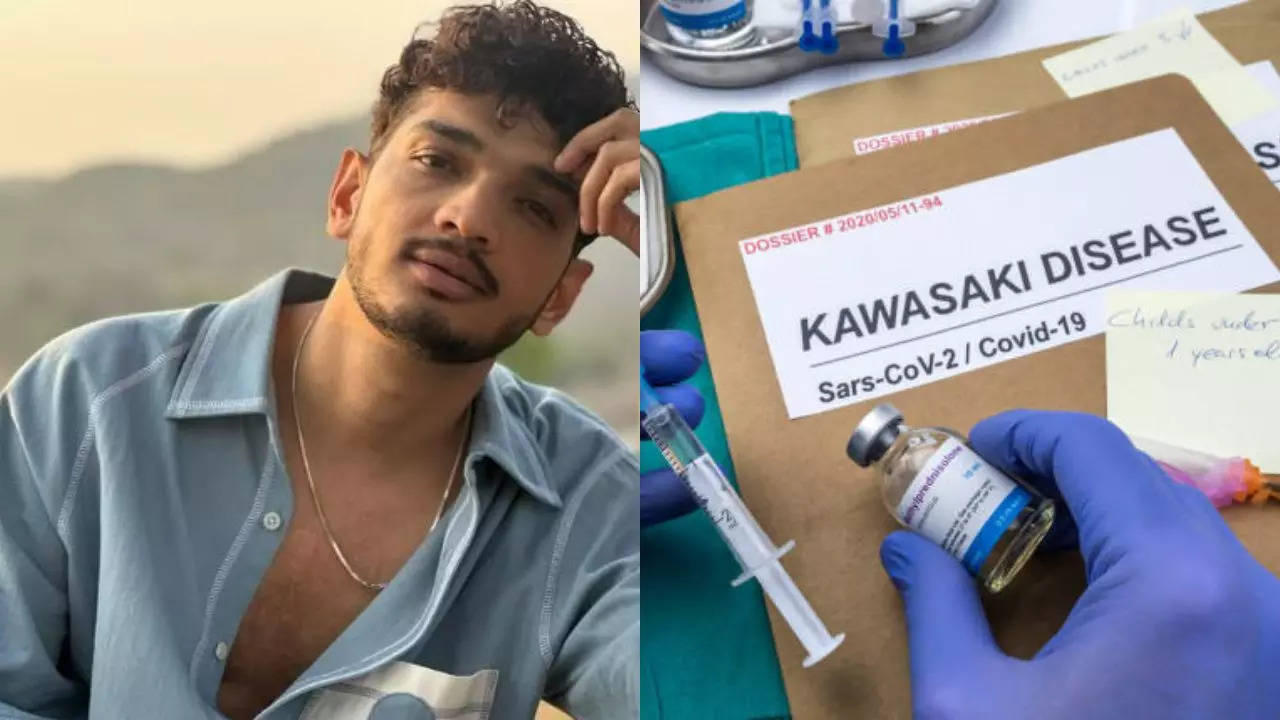Contents
-
news
-
Health
What is the rare disease suffered by Kawasaki, Munawar Faruqui’s son? Is it life threatening?
Comedian Munawar Faruqui recently opened up about the tough time in his life when his young son was diagnosed with Kawasaki disease, a rare blood vessel inflammation, when he was just one and a half years old. The exact cause of Kawasaki disease is not known, but experts believe it may be triggered by a combination of genetic and environmental factors, possibly including certain infections. Read on to know more about it.

Kawasaki disease or Kawasaki syndrome is a rare type of vasculitis or blood vessel inflammation.
stand-up comedian Munawar Farooqui Recently revealed about rare Kawasaki disease His younger son was diagnosed. Farooqui said his son was one and a half years old at the time and fell seriously ill.
In a podcast interview, Munawwar recalled that he needed Rs 75,000 for his son’s treatment, but he had only Rs 700-800 in his wallet. Despite the tension, he tried to remain calm in front of the doctor.
What is Kawasaki disease?
According to experts, Kawasaki disease, or kawasaki syndrome This is a rare type of vasculitis or blood vessel inflammation. Inflammation in the blood vessels makes them weak and dilated, putting them at risk of bursting or narrowing. This limits how much blood can reach tissues and organs to nourish them.
Doctors say Kawasaki disease most commonly occurs in children ages 6 months to 5 years and affects all of their arteries — however, the biggest concern is the coronary arteries that supply blood to your heart. Children with affected coronary arteries may have permanent heart problems as a result.
With prompt treatment, most children recover in about two to three months.
What causes Kawasaki disease?
Even though the cause of Kawasaki disease is not known, most cases occur in late winter and early spring. And so, scientists say they are researching possible causes like changing weather patterns, infections, environmental factors or even genetic issues.
signs and symptoms of kawasaki disease
Some symptoms of this disorder include:
- high fever, which lasts more than five days
- increasing irritability in children
- red or pink eyes without any discharge
- redness or cracking of your child’s lips or tongue
- Swelling and redness in hands and feet
- peeling of the skin, usually starting around the nails
- The rash occurs mostly on the child’s torso
- swollen lymph nodes on the neck
- upset stomach
- stomach pain
Kawasaki disease mostly affects boys under five years of age. Additionally, being of Pacific Islander or Asian descent makes you more vulnerable, although doctors say you may still be at risk even if you don’t have any of these risk factors.
Complications caused by Kawasaki disease
Some complications that can occur due to Kawasaki disease, some of which are serious, include:
- Weakness and stretching of the aneurysm or inflamed coronary arteries. Many severe cases also require coronary artery bypass surgery.
- blood clotting and narrowing of the coronary arteries
- coronary artery rupture
- Problems with the heart valves that keep blood flowing in the right direction to the heart
- swelling in the heart of a child
- hepatitis in child’s liver
- swelling in child’s lungs
- baby heart infection
- Pancreatitis or inflammation of the pancreas in a child
- poor heart function or heart failure
- heart attack
Is Kawasaki disease curable?
Symptoms of Kawasaki disease in children can last for four to six weeks. They may feel tired and irritable for up to eight weeks. According to experts, even if it is treated, Kawasaki disease can come back in about 2-3 percent of cases.
This causes long-term damage to the arteries and also potential heart problems like atherosclerosis in adulthood. People who have aneurysms due to disease may need long-term follow-up every year or for a few years throughout their lives. In some cases, they may need a procedure to improve blood flow.
It is also important to ensure that the child does not develop blood clots.
Get the latest news live on Times Now with breaking news and top headlines from around the world.
Munawar Farooqui


